Next time you’re in a car driving through a residential neighborhood, try this experiment. Glance at the speedometer when you’re in the middle of a block. You’ll probably find it’s pretty easy to reach or top 25 mph, the standard residential speed limit for cities in Oregon and Washington.
I did this yesterday on my way to pick up my daughter from elementary school. And you know what I got from other parents walking on the sidewalk, often with a toddler or two in tow? Super dirty looks.
To someone on foot navigating narrow streets with parked cars and unprotected intersections, it feels like you’re driving too fast. And they’re probably not wrong. As I was cruising up to 25 mph (on streets outside the school zone), I tried to imagine that a ball rolled right in front of me with a kid chasing it. Or that someone with an armful of groceries opened a car door without looking, or that a pedestrian in dark clothes stepped into a poorly lit intersection. Would I be able to stop in time? Maybe, maybe not. It would depend on how soon I saw whatever I was about to hit.
Then drop your speed to 20 mph. With that small change, it becomes much easier to halt the momentum of 3000 pounds of metal. When I drove through the neighborhood at 20 mph, what reaction did I get from the moms and dads? Smiles. Polite waves as I stopped easily to let them cross in front of me. Like I was a safe, respectful driver (probably a parent!) who wasn’t trying to kill their children.
It turns out that the mom scowl is grounded in science. That’s why cities that are getting serious about pedestrian safety and creating family-friendly cities are lowering speed limits in residential neighborhoods to 20 mph. And thanks to recent changes in Washington and Oregon state law that made it easier for cities to do so, a handful of Northwest cities are beginning to explore or implement the change.
Next year, for instance, Seattle plans to pilot “20 mph neighborhood zones” in five to ten areas of the city where collision data, pedestrian and bike traffic, and community input indicate lower speed limits spanning a few blocks could improve safety.
London did it in specific residential areas decades ago, and has seen a 40 percent reduction in road casualties there. Whom did the change most protect? Small children. Research from the US has shown that kids under 14 are far more likely to be hit by cars on streets with speed limits up to 25 miles per hour, presumably because that’s where they’re usually playing. Other studies have shown that the odds of a pedestrian dying after being hit by a car traveling 20 miles per hour is about 5 percent, and they get worse in a hurry the faster the car is traveling.
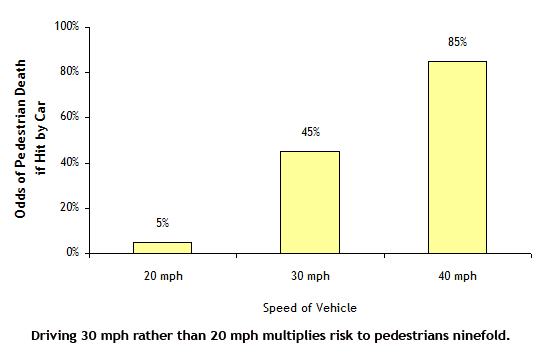
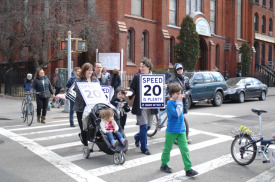
New York City has become a champion for safer streets with its Vision Zero campaign, which aims to end pedestrian deaths and injuries. Even before it lowered citywide speed limits to 25 mph this year, New York began implementing neighborhood slow zones with 20 mph limits and other traffic calming elements two years ago. In those areas, it’s seen a 10—15 percent decrease in speeds, 14 percent reduction in crashes with injuries and a 31 percent reduction in vehicle-related injuries. And residents have been clamoring for more.
Here in the Northwest, Oregon passed a state law in 2011 making it possible for cities to lower speed limits on some residential streets by 5 mph without having to undertake expensive and time-consuming engineering studies. The legislation is limited to streets that have fewer than 2000 car trips a day, where average speeds are lower than 30mph, and that have consistent bike and pedestrian signage.
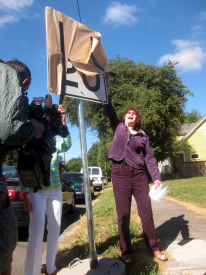
That paved the way for Portland to lower speed limits on 70 miles of neighborhood greenways. That’s the city’s network of traffic-calmed neighborhood streets that have been designed to elevate the needs of pedestrians and cyclists above cars cutting across the city. The standard speed limit is now 20 mph, and engineers use speed humps and other traffic calming techniques to achieve that goal. Eugene is considering a similar change on 8 miles of bicycle boulevards to be built in the next few years.
So far, Seattle is the only city to take advantage of the Neighborhood Safe Streets Bill, which the Washington legislature passed last year, though others are considering action. The new law allows cities to lower speed limits to 20 mph on residential streets and non-business arterial streets without having to go through expensive red tape. That frees up money for on-the-ground improvements to reduce speeding, address cut-through traffic, and make neighborhoods safer for people of all ages and abilities.
So far, the city has only implemented 20 mph speed limits on 12 miles of neighborhood greenways, which are similar to Portland’s. That will be the default speed limit as the city expands that network of family- and bicycle-friendly streets (the green lines on the maps below).
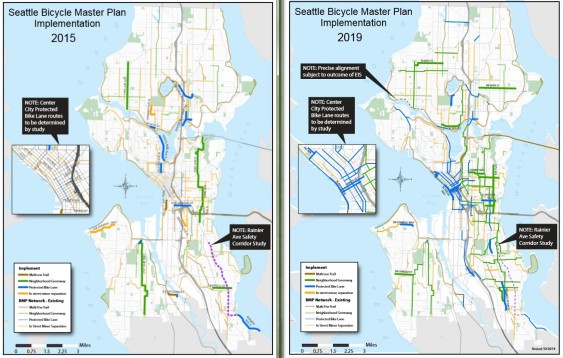
Next year, Seattle wants to explore the idea of wider 20 mph zones. Officials plan to comb through collision data and ask communities if there are multi-block zones—ones with pedestrian and bike traffic or a history of collisions or injuries—where lower 20 mph speed limits could improve safety and livability. These could look something like “neighborhood slow zones” that New York has pioneered.
With a budget of just $100,000, it’s likely the city would start with five or ten pilot projects scattered across the city and developed with support from community groups and businesses, said Seattle Traffic Engineer Dongho Chang. Initially, the city would likely use signage and street paint (the cheapest options) and community awareness to mark the new zones.
If data show the city needs “more oomph” to slow traffic to 20 mph, it could consider adding engineered solutions like speed humps, Chang said. Hopefully, the combination of engaging the community and taking relatively simple steps can effectively create safer places to walk and bike, Chang said, after which the program could be deployed more broadly.
That remains an open question, as research has generally shown engineering streets to be more effective than just posting signs. But it’s a good start, and I bet the scowling parents will approve.
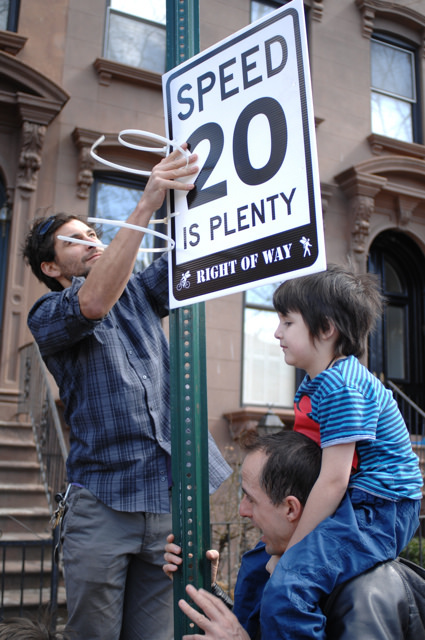

Comments are closed.